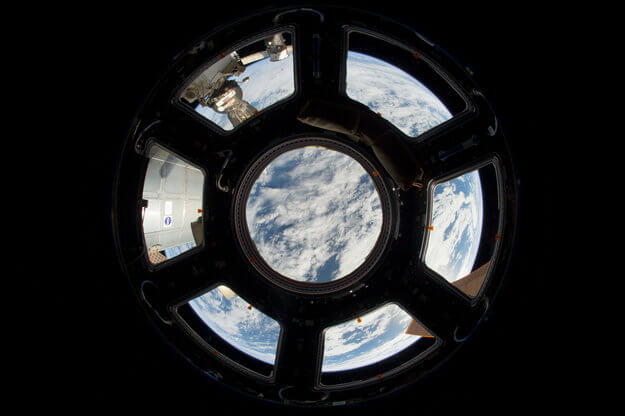The view from the cupola's seven windows also helps astronauts monitor and review the technical status of their orbital laboratory, and it serves as headquarters for the station's robotic arm operations, a coordination point during spacewalks, and an operations center when a cargo spacecraft arrives.

This amazing photo was taken by European Space Agency astronaut Luca Parmitano through the window of the International Space Station at the end of a cell known as a cupola. Luca jokingly posted on Twitter: "This is proof that the Earth is indeed round."
Although the cupola is a favorite place for the astronauts to relax and admire our home world, the pre-built windows of good optical quality provide an observation platform for serious scientific work: the cameras, equipped with powerful lenses, are always ready for use, and the astronauts can respond much faster to targeted observation requests from the scientists and observation experts on Earth's atmosphere.
The wide view from the cupola's seven windows also helps astronauts monitor and review the technical status of their orbital laboratory, and it serves as headquarters for the station's robotic arm operations, a coordination point during spacewalks, and an operations center when a cargo spacecraft arrives.
The cupola dome is one of the parts of the station that were made in Europe. It was built in Italy and has been an essential component of the International Space Station since February 2010, when it was launched aboard the space shuttle Endeavour.
Parmitano is staying aboard the space station as a representative of the Italian Space Agency (Asi) under a bilateral agreement between Asi and NASA. Together with Russian cosmonaut Fyodor Yurchikhin and NASA astronaut Karen Nyberg. Luca is a member of the 36/37 team.
Luca's mission is called "Volare" - "to fly" in Italian - to symbolize the search for new frontiers and opportunities for discovery. Luca will cross a new personal frontier later this week, when he is scheduled to perform his first spacewalk.
